Terminal Equipment and Paraphernalia
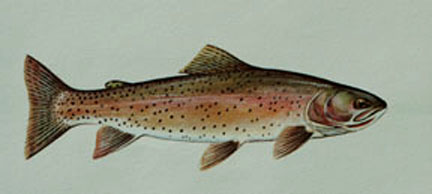
Cutthroat Trout
Leader Butt and Leader
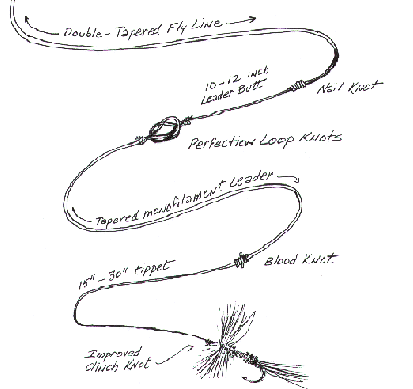
The leader butt attaches to the fly line at the tapered end. The leader butt ends with a perfection loop knot or a blood knot. Attached to this knot is the tapered leader. The leader butt is approximately twelve to sixteen inches long. The traditional choice, a perfection loop knot, affords quick and easy leader changes. Many fly fishers will assert that the use of a perfection loop knot can cause the fly to land askew. I ask you, do you think it is really the knot? I rarely have a poor turn over, and when I do, I don't blame the knot. I find also that beginners tend to waste a lot of line when they tie knots, and before long they have lost the twelve inches of leader butt length and have to go through the time consuming process of creating a new one. Go with a perfection loop initially. Echoes of Thoreau, "Simplify, Simplify, Simplify!"
Tippet Material
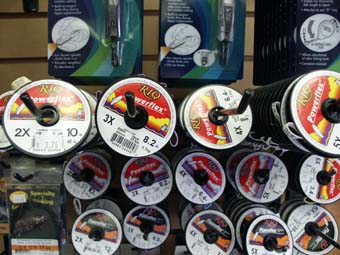
After changing a number of flies or snagging your line on a branch, your once tapered leader has lost its original diameter and needs to be replaced. I generally recommend a 4X diameter leader tippet (.007 inch rated at approximately 4 pounds test breakage) for most of the early season. During the dog days or August, when the water becomes very shallow and slow, I drop down to 5X or 6X, which is a challenge. What you gain in invisibility and threading ease for small flies you lose to breakage. The larger the fly, the larger diameter tippet you will need. For repairs keep a spool of 2X through 5X tippet material in your vest.
Fly Dressing and Line Dressing
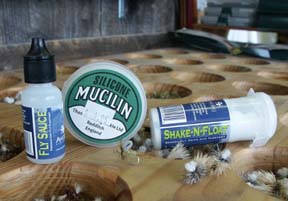
Fly dressing comes in many forms and substances from silicone sprays to dry crystals. The more common form, a silicone semi-fluid wax, is probably the most popular. Lightly applied to the fly, water is repelled from the fly materials enabling the fly to float high and dry. Eventually, the fly will soak up too much water which causes the fly to sink. For tiny dry flies, silicone liquid and drying crystals work most efficiently.
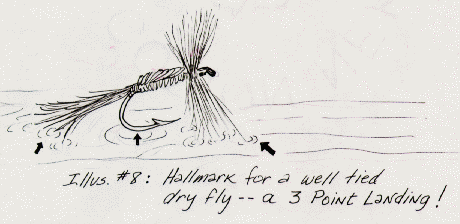
Finger nail clippers are used to cut off the extra piece of tippet which usually is present after you have tied your fly to the tippet. Be forewarned that many people have chipped their teeth attempting to bite off the little left-over piece!
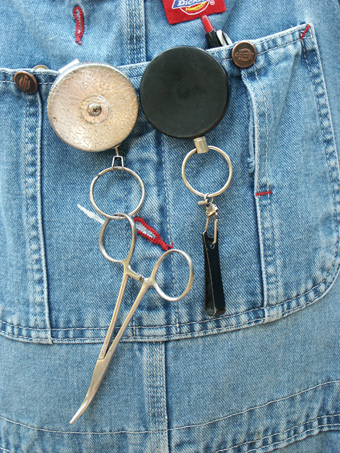
The following list may be used as an inventory for items which I believe are essential:
_____ fly box
_____ Vest
_____ Forceps for extracting flies
_____ Net
_____ Hook sharpener
_____ pinch on floats for strike indicators and twist lead
_____ polarized sun glasses (a must!)
_____ Waders with felt soles or boots with felt
_____ Hat
_____ Insect repellent / head net
If you are new to fly fishing and planning a trip to the Sierras, a good place to get outfitted is Bishop.